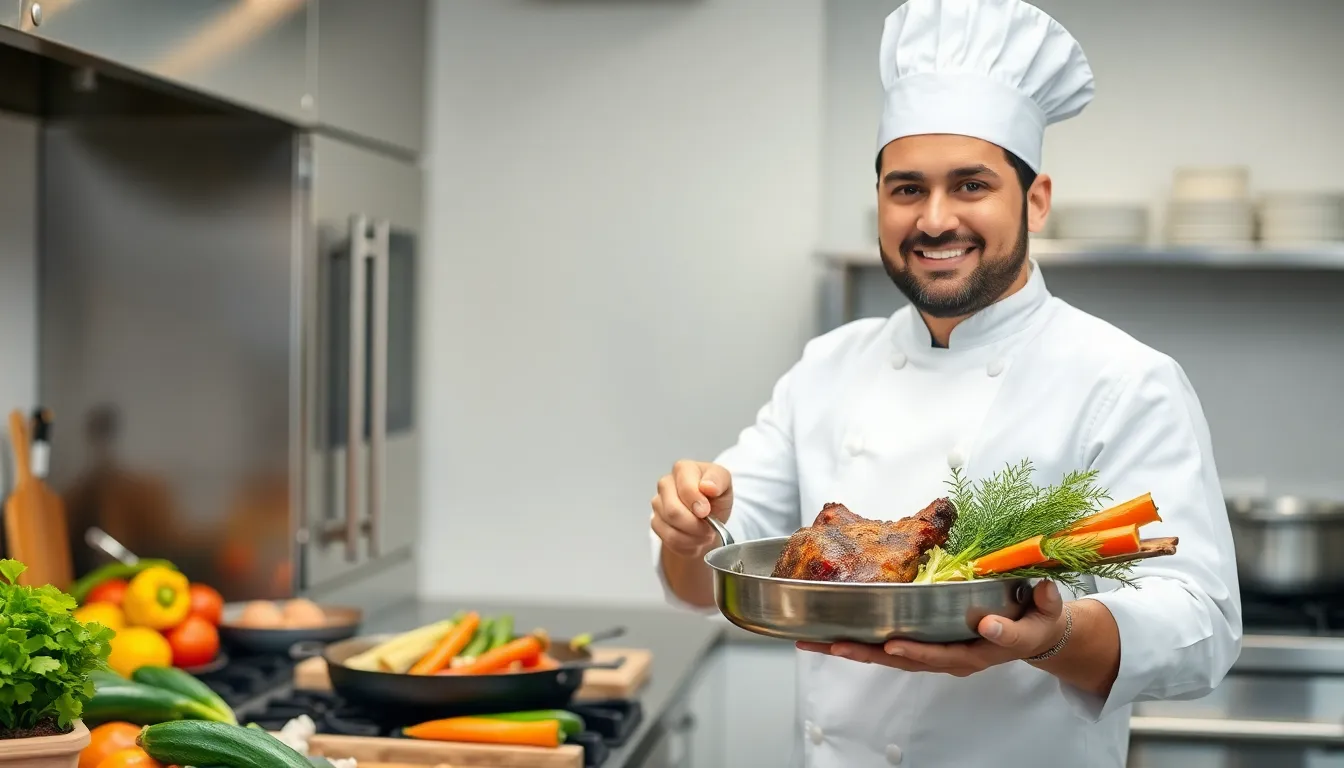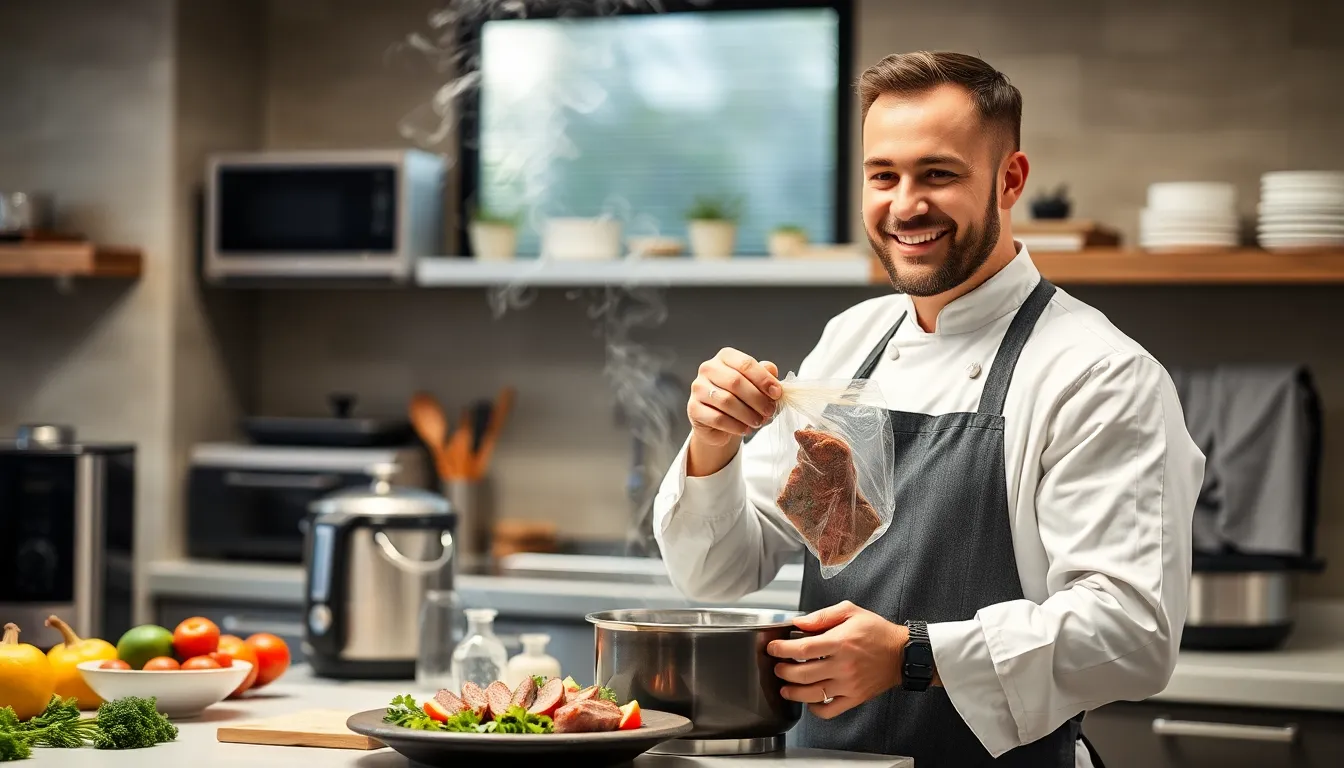When it comes to cooking, most folks have their go-to methods: boiling, grilling, or maybe even microwaving leftovers. But what if they could elevate their culinary game with a little magic known as combination cooking? Imagine the sizzling symphony of flavors that comes from blending techniques like steaming and roasting. It’s like a culinary duet that leaves taste buds dancing!
Table of Contents
ToggleUnderstanding Combination Cooking Methods
Combination cooking methods blend different cooking techniques to enhance flavor and texture. This approach allows for diverse culinary creations using various methods like boiling, grilling, and steaming.
Definition of Combination Cooking
Combination cooking involves utilizing multiple cooking techniques in a single process. Examples include using steam and dry heat together, such as roasting a chicken with steam for moisture. This method capitalizes on the strengths of different techniques, producing dishes with unique appeal. The ability to combine methods increases versatility in the kitchen and offers a broader flavor spectrum.
Importance of Combination Cooking
Combination cooking enhances food by integrating flavors and textures seamlessly. One can achieve moist, tender results while infusing rich flavors into dishes. Using this approach often reduces cooking times and improves efficiency. Chefs often appreciate how this versatility accommodates various ingredients, making it easier to craft innovative recipes. It’s common for home cooks to use combination cooking to elevate everyday meals and explore new culinary possibilities.
Techniques Involved in Combination Cooking

Combination cooking methods incorporate multiple techniques to enhance flavors and textures. Various techniques fall under this category, contributing to exciting culinary creations.
Braising
Braising combines moist and dry heat cooking techniques. Initially, a food item cooks in fat at high temperatures. After browning, adding a small amount of liquid causes the dish to simmer slowly in a covered pot. Results include tender meat and rich flavors, as the long cooking time melds the ingredients. Commonly used with tougher cuts of meat, braising transforms them into delightful, juicy meals.
Stewing
Stewing involves cooking ingredients in a liquid over low heat for an extended period. Ingredients such as meat, vegetables, and herbs simmer together, allowing flavors to meld. This method ensures that tougher pieces of meat become tender and well-infused with the liquid’s essence. By covering the pot, moisture remains, creating a comforting, hearty dish. Stewing offers versatility, accommodating various ingredients like beans and grains.
Sous Vide
Sous vide employs precise temperature control to cook food in a vacuum-sealed bag. Initially, the bag immerses in a water bath, gradually reaching the desired temperature. This method preserves the food’s moisture and flavor, preventing overcooking. As a result, proteins maintain their texture while absorbing surrounding flavors. Chefs frequently praise sous vide for its innovative techniques, leading to perfectly cooked dishes every time.
Benefits of Using Combination Cooking Methods
Combination cooking methods provide unique culinary advantages that enhance the overall cooking experience. These techniques maximize flavor, efficiency, and versatility in the kitchen.
Enhanced Flavor Profiles
Flavor depth significantly increases with combination cooking methods. By blending techniques like roasting and steaming, chefs capture a broader spectrum of tastes. Roasting caramelizes natural sugars, while steaming preserves the fresh essence of ingredients. Together, these methods create a harmonious flavor profile that excites the palate. Utilizing different cooking styles often leads to complex flavors that elevate simple dishes into gourmet creations. Ingredients match harmoniously, and the infusion of spices or sauces amplifies taste. The combination of techniques encourages experimentation, enabling culinary artists to develop unique recipes. Ultimately, these flavors resonate well with diners seeking enriching culinary experiences.
Improved Texture and Tenderness
Texture and tenderness benefit greatly from combination cooking. For instance, braising promotes a moist environment, allowing tougher cuts of meat to become incredibly tender. Combining dry heat with moisture ensures that proteins cook evenly without drying out. Stewing, using low and slow heat, melds flavors while softening vegetables and meats. Techniques like sous vide maintain precise temperatures, guaranteeing evenly cooked results while preserving original textures. Enhanced moisture retention becomes apparent while cooking vegetables, keeping them crisp yet tender. The diversity of methods allows for innovative dishes that invite texture variety. Creative cooks appreciate how combination cooking can transform everyday ingredients into delightful meals.
Common Misconceptions about Combination Cooking
Combination cooking often faces misunderstandings that can limit its appreciation. Many believe this cooking style only entails simple actions. However, it actually combines multiple techniques to produce superior results.
Myths vs. Facts
One common myth suggests combination cooking complicates meal preparation. In reality, it streamlines the cooking process by enhancing flavor through diverse techniques. Another misconception involves the belief that only professional chefs can master these methods. Amateur cooks can successfully apply combination cooking with practice. Some also think combination cooking requires specific equipment, but many techniques utilize common kitchen tools.
Importance of Proper Techniques
Proper techniques in combination cooking significantly influence the final dish. Awareness of individual method strengths ensures optimal flavor and texture. A chef might brown meat first before braising, allowing for rich flavors to develop, while vegetables benefit from steaming to maintain nutrients. Mastering timing also plays a crucial role, as overcooking can ruin the desired outcome. By recognizing these nuances, cooks can elevate their culinary creations and achieve impressive, restaurant-quality results.
Combination cooking offers a dynamic approach to culinary creativity. By merging various techniques, it elevates flavors and textures while enhancing efficiency in the kitchen. This method not only allows for the transformation of simple ingredients into gourmet meals but also inspires cooks to explore new possibilities.
With techniques like braising, stewing, and sous vide, combination cooking proves to be more than just a trend. It’s a valuable skill that can significantly improve the quality of dishes. As both amateur and professional cooks embrace this versatile cooking style, the potential for innovative recipes and delightful dining experiences continues to grow. Embracing combination cooking can lead to a richer culinary journey, making every meal an opportunity for exploration and enjoyment.




